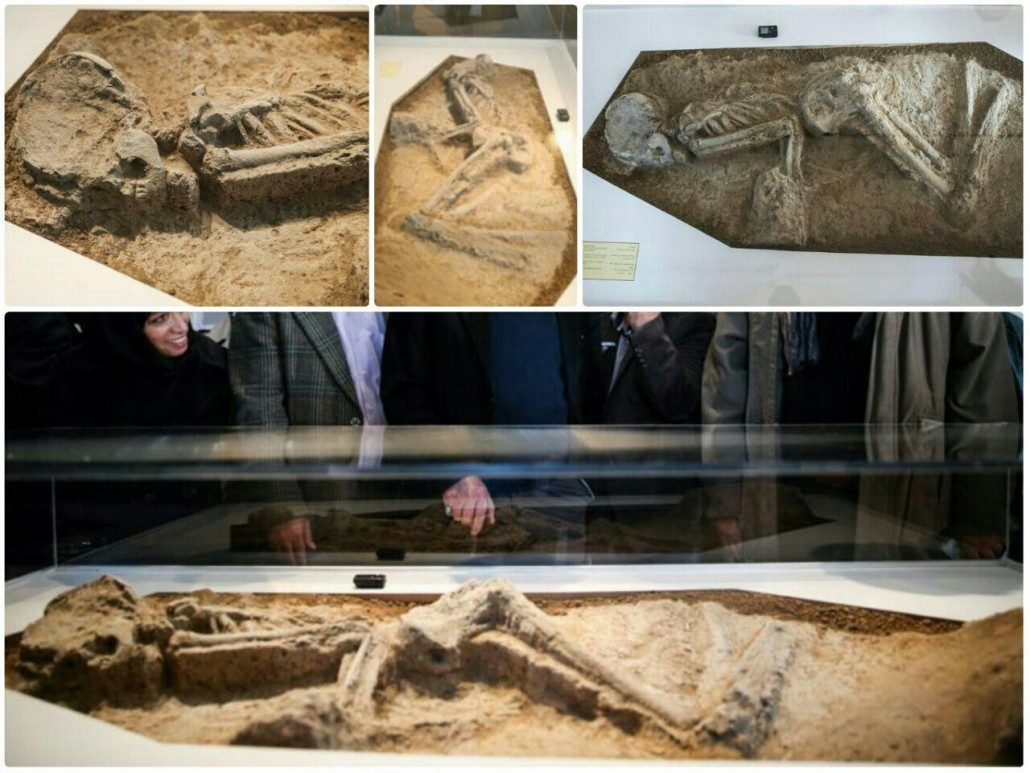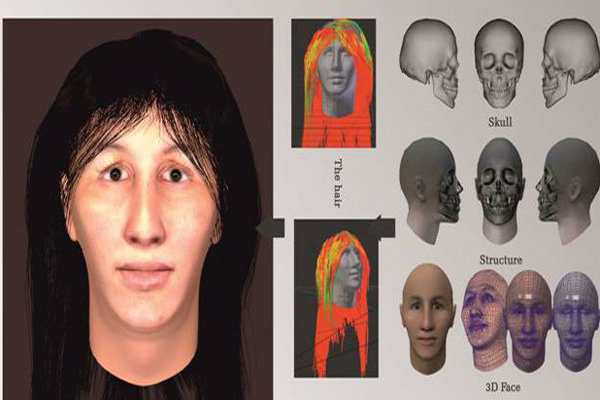The Tehran Times on January 8, 2016 has reported of the remains of a 7-millennia-old woman that will remain on display at the National Museum of Iran in Tehran (see Tehran Times report for more details regarding the exhibition “Molavi Street Discoveries and Tehran 7,000-Year-Old Woman”).

The 7000 year old remains on display at the National Museum of Iran in Tehran (Source: Tehran Times).
The discovery of the remains of the 7000 year old woman was made in November 2014 by Iranian archeology student Mahsa Vahabi whose keen observation of her surroundings led to the discovery of ancient stone foundations, samples of pottery, human bones. This is all the more remarkable as Mahsa Vahabi had made this discovery as she was walking along Tehran’s Molavi Street near the city’s Grand Bazaar. She found the items situated at the bottom of a construction site excavated by a Tehran-based Water and Wastewater Company. Mahsa Vahabi rapidly reported her discovery Siamak Sarlak a well-known Iranian archaeologist. Vahabi and Sarlak then successfully appealed to the Water and Wastewater Company to suspend its works in order to allow for a professional excavation to take place.
The bones discovered by Vahabi have been scientifically proven to have been the skeleton of woman who lived sometime 7,000 years ago. Mehr News reported in mid-June 2015 that the face of the skeleton had been reconstructed with the help of 3D imaging technology by Mohammad Reza Rokni of the Archaeology Research Center and his research team.

3D imaging Reconstruction of the 7000 year old woman discovered in the construction site along Tehran’s Molavi street in November 2014 by Mahsa Vahabi (Source: Archaeology.org). As reported by Mehr News Agency Mohammad Reza Rokni’s team based the appearance of the woman’s hair on the pottery images from Cheshmeh Ali (dated to the late Neolithic and Chalcolithic village, situated in northern Iran).
For more on a thousands year old civilization based in Iran, consult Archaeology.org: The World in Between



